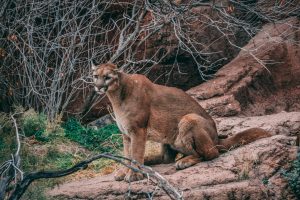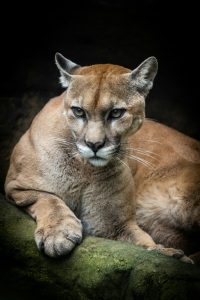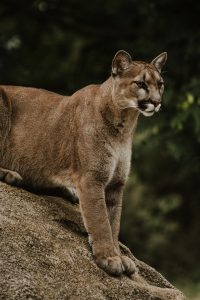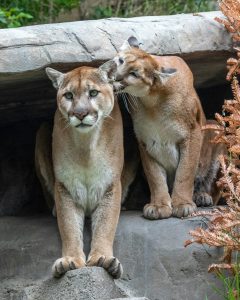The American cougar, also known as the puma, mountain lion, or cougar, is a large felid species widely distributed throughout the Americas, ranging from Canada to South America. Renowned for its adaptability and elusive nature, the cougar holds a significant place in the ecological and cultural landscape of the Americas.
Physical Characteristics: The American cougar boasts a sleek and muscular body, designed for agility and stealth. Its coat varies in color from tawny brown to grayish, with lighter underparts and darker markings on the face and tail. Adult males can weigh between 115 to 220 pounds (52 to 100 kilograms), while females are generally smaller, weighing between 64 to 141 pounds (29 to 64 kilograms). These solitary predators possess keen senses, including sharp vision, acute hearing, and a highly developed sense of smell, enabling them to thrive in diverse habitats.

Habitat and Distribution: The American cougar exhibits remarkable adaptability, inhabiting a wide range of ecosystems, including forests, mountains, deserts, and swamps. Its distribution spans from the rugged terrain of the Rocky Mountains in North America to the dense rainforests of South America. Despite its ability to thrive in various habitats, human encroachment, habitat loss, and hunting have led to population declines and fragmentation of cougar habitats in many regions.

Behavior and Diet: As solitary hunters, cougars are primarily nocturnal and crepuscular, preferring to hunt during the cover of darkness. Stealthy and agile, they stalk their prey, which primarily consists of deer, but may also include smaller mammals such as raccoons, rabbits, and rodents. Cougars are apex predators, playing a vital role in regulating prey populations and maintaining ecosystem balance. They typically avoid confrontations with humans but may occasionally display defensive behavior if threatened or cornered.

Conservation Status and Threats: While the American cougar is not currently listed as endangered, it faces various threats across its range. Habitat fragmentation, human-wildlife conflict, poaching, and vehicle collisions pose significant challenges to cougar populations. Conservation efforts focus on habitat protection, wildlife corridors, and education initiatives to foster coexistence between humans and cougars.

Cultural Significance: Throughout history, the American cougar has held cultural significance among indigenous peoples of the Americas, symbolizing strength, wisdom, and stealth. Cougars feature prominently in Native American mythology, folklore, and art, often depicted as powerful and revered beings. Today, the cougar continues to inspire awe and respect, serving as a symbol of wilderness and resilience in the Americas.

Conclusion: The American cougar, with its majestic presence and vital ecological role, embodies the spirit of the wild landscapes it inhabits. As stewards of the environment, it is imperative to protect and preserve cougar habitats, ensuring the continued existence of this iconic feline species for future generations to admire and appreciate.


